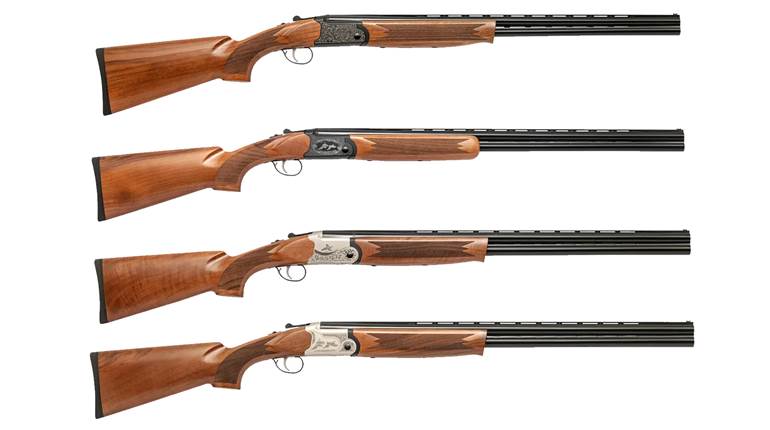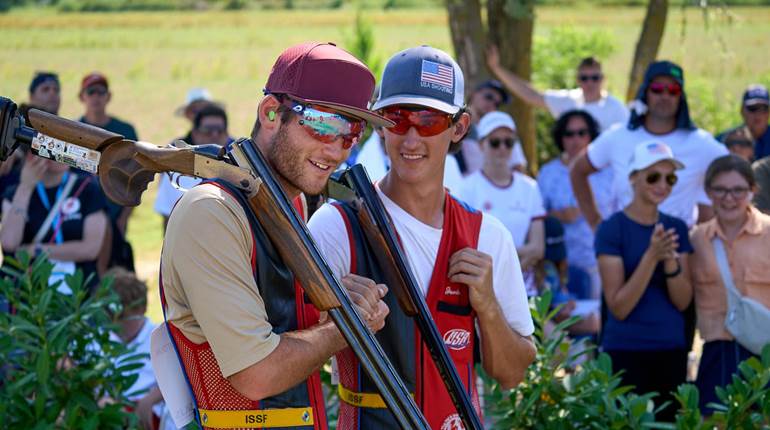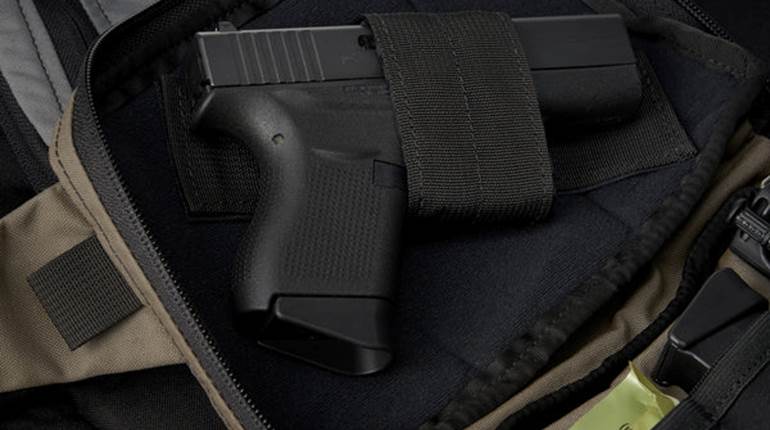
Isidoro Rizzini established Fabbrica Armi Isidoro Rizzini (FAIR) in Brescia, Italy, back in 1971, and today the maker offers a full line of over-under and side-by-side shotguns. The subject of this review, a 28-ga. Iside, is a fine example of the firm’s work that offers a lot of gun for the money.
The Iside is a side-by-side double-barrel shotgun of boxlock construction with an automatic safety. Each time the top lever is moved to the open position the tang-mounted sliding safety is applied. Should you prefer a manually applied safety, a good, qualified gunsmith can disable the automatic feature of the safety to render it manual or it can be ordered that way from the company.
The straight (English-style) buttstock and fore-end are of nicely figured European walnut. Checkering on the stock is a basket-weave design that is laser-cut. For some hands it may be a bit too finely spaced to afford a firm grip in wet and cold conditions, but it is attractive to the eye. The splinter-style fore-end’s checkering is also fine, with the basket-weave pattern present, but it seems to be a bit coarser there, affording a more positive grip. The butt is finished with a hard plastic plate.
The scaled action of the 28 gauge is chemically case colored rather than casehardened, but the colors are nice, and it is difficult to tell the difference with the naked eye. The back of the receiver is scalloped, with the wood only slightly proud of the metal. The barrels are highly polished and deeply blued, to the point of being nearly black, as are the trigger guard, top lever, triggers and fore-end iron.
As tradition would have it, the test gun has double triggers. Double-gun shooters pretty much agree that barrel selectors are not fast enough to use at the flush of a pheasant or a covey of bobwhites—they pretty much set it and forget it. The beauty of a double-trigger gun is the instant selection of choke; pull the front trigger and the right barrel fires, pull the rear trigger and the left barrel fires.
Thoughtfully, FAIR has manufactured the Iside to be compatible with interchangeable choke tubes, making the true application of double triggers a reality, and three (cylinder, improved cylinder and modified) ship with the gun. Measured with our Lyman Digital Trigger-Pull Gauge, the trigger pulls were very light, with the front trigger averaging 2 lbs., 14 ozs., and the rear measuring 2 lbs., 3 ozs. The 28-ga. version of the shotgun weighs just shy of 5 lbs., and those trigger pulls are commensurately light to go with the gun’s overall weight.

The 27 7⁄8" barrels, chambered to accept 3" shells, are bored with FAIR’s X-Cones—lengthened forcing cones that provide more even and uniform patterns. Both barrels measured 0.553" in diameter at a point 9" from the mouth of the chamber. The rib is a typical game-style rib made of a composite material that contributes to the lightness of the gun. The barrels pivot using a traditional hook and hinge pin, and are locked into battery with a double Purdey-style underbolt.
The Iside is equipped with extractors that lift the shells from the mouth of the chamber for easy removal but do not eject them from the gun; for those who reload or do not wish to leave a trail of fired hulls across the landscape, it’s an ideal setup. We did find the automatic safety a bit stiff to move, especially for a young shooter—perhaps a bit of lubrication would help it along. The fore-end detaches with an Anson & Deeley-style rod that makes removal easy. When reassembling, it is necessary to hold the top lever over, as it does not automatically stay open except with the barrels mounted.
The 28 gauge is pretty much an ideal chambering for a beginner, as it throws enough shot to down a bird, rabbit, squirrel or clay target, yet has light recoil. For the older hunter, it’s just an excellent gauge that is appropriate for any game-farm bird—wild quail, partridge and even pheasants if the shots are not too long. In pattern testing, using Winchester Super X 1-oz. No. 7½ loads, on average, the improved cylinder tube provided 44 percent patterns and the modified choke produced 45 percent patterns. The difference between the two was that the modified choke patterns were slightly more center-dense. The average velocity across our Oehler chronograph was 1101 f.p.s. four feet from the muzzle.

In shooting the FAIR Iside, we took it first to the 16-yd. patterning plate and it shot dead-on. If you prefer to “float” the bird above the barrel, the addition of a comb-raising pad might be in order. We found the Iside to be user-friendly when shooting clays, although the barrels initially pivot quite stiffly upon opening. We ascribe this to the cocking stub of the barrels pushing the hammers back onto their sears for the next shots. The bar of the 28-ga. scaled action is fairly short, so the leverage exerted feels heavier.
All in all, it’s a very nice side-by-side made on a properly sized action that ought to provide a great deal of satisfaction in the field.





































